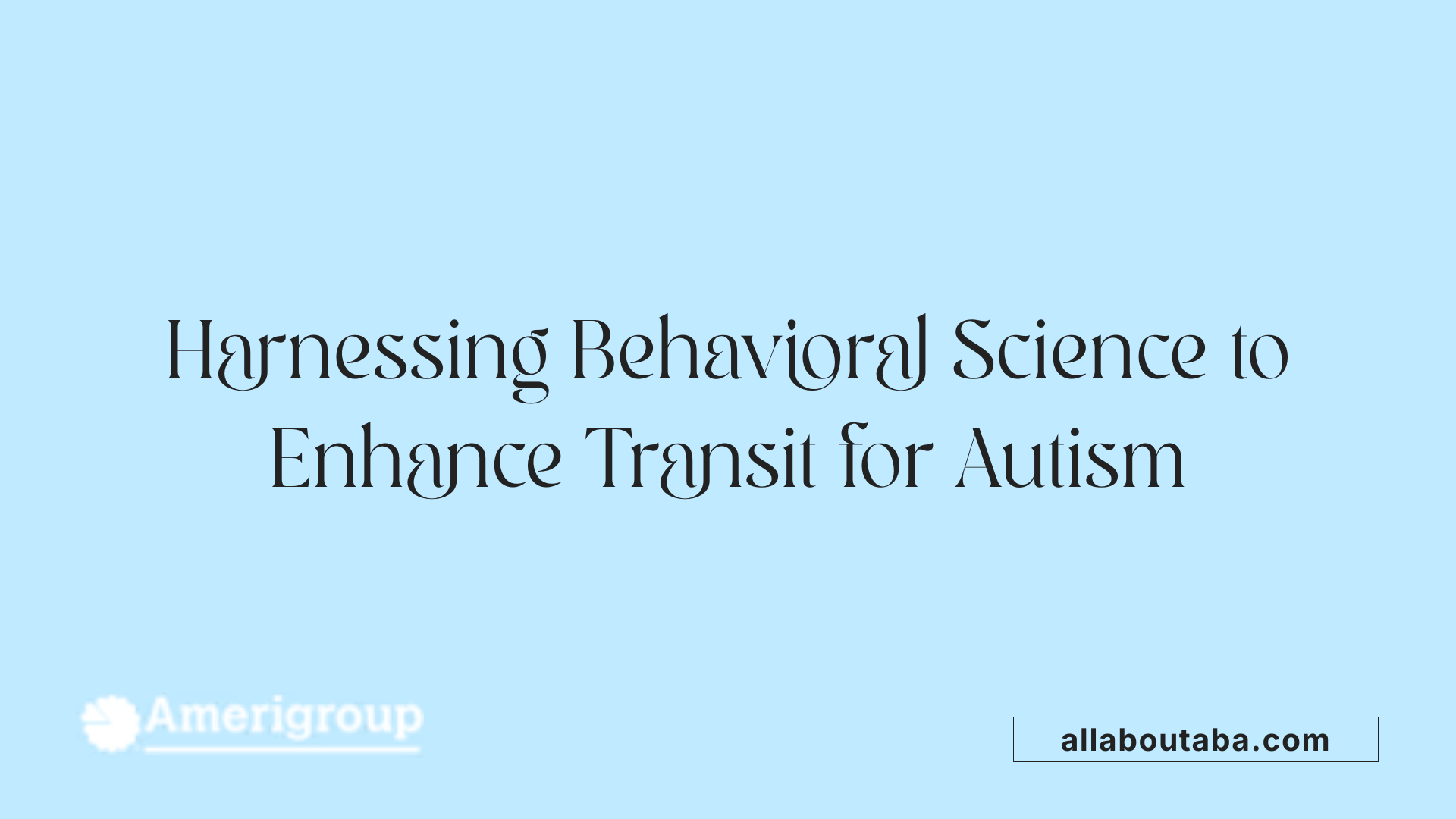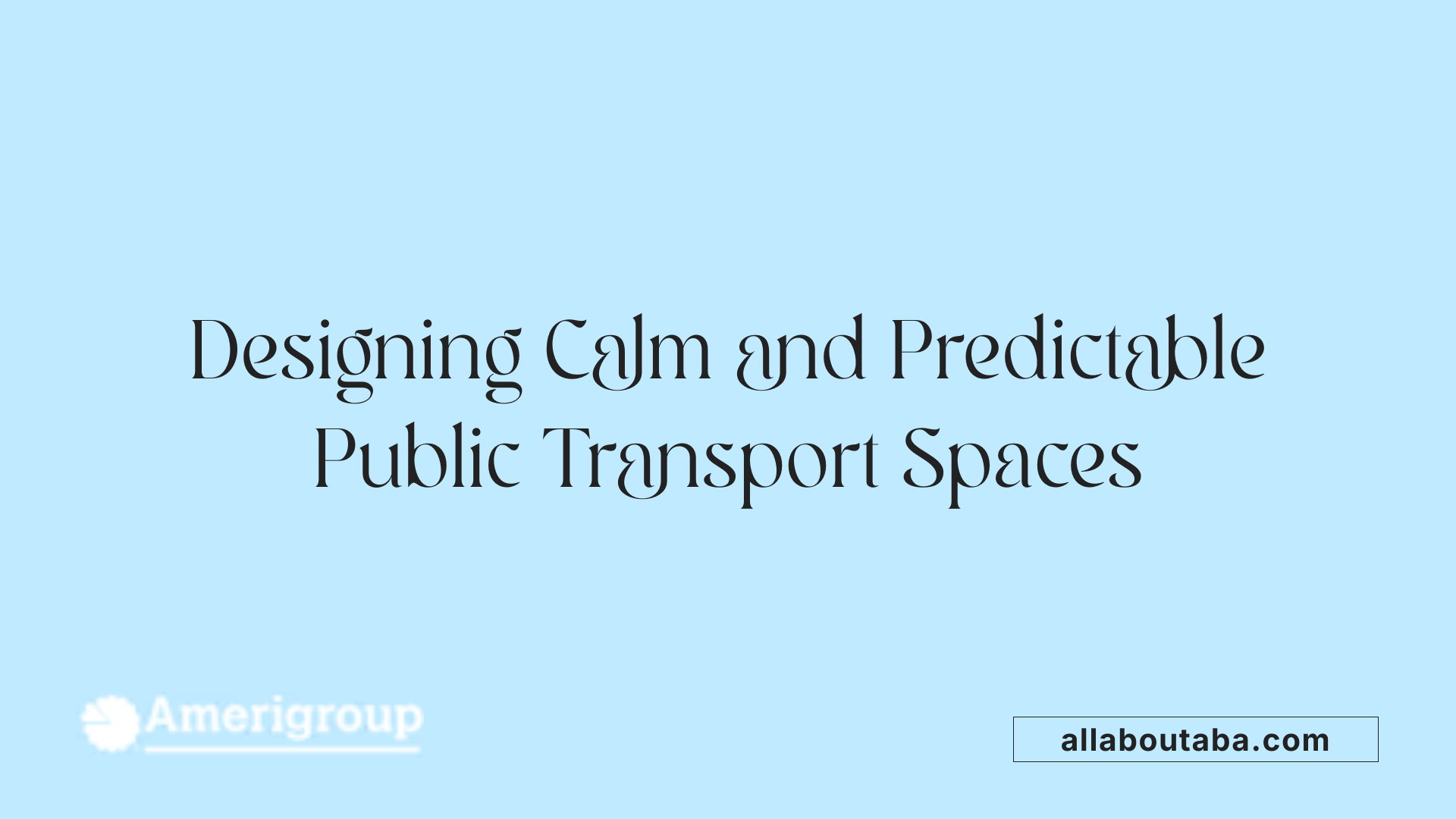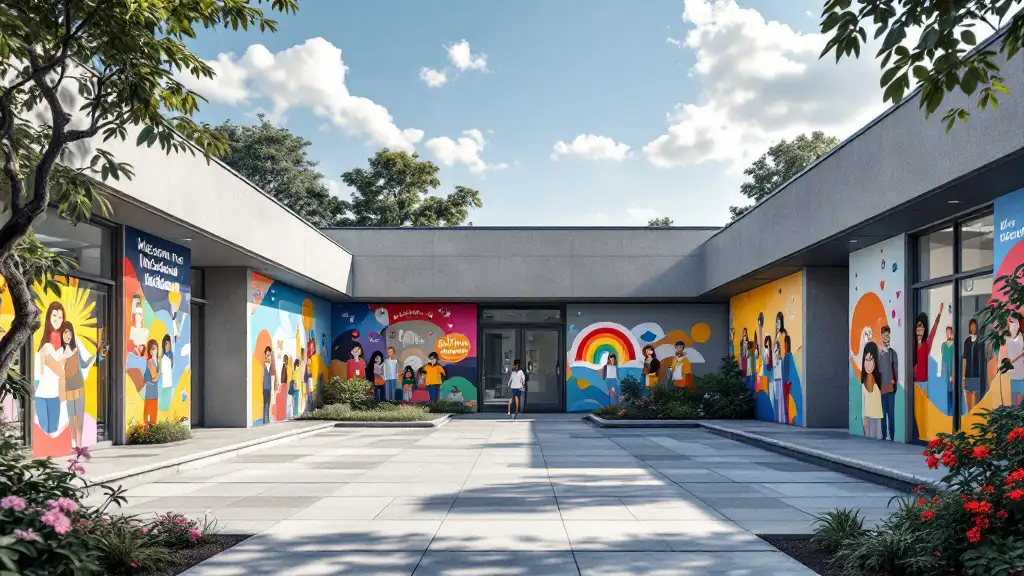Best Practices For Autism-Friendly Public Transport Design
Understanding the Intersection of Autism and Public Transportation
Public transportation is a vital part of community life, enabling mobility and social participation. For individuals with autism, however, navigating these systems presents unique challenges related to sensory sensitivities, communication, and unpredictability. This article explores best practices for autism-friendly public transport design, integrating insights from behavioral therapy to enhance accessibility and comfort for autistic users.
Challenges Faced by Autistic Individuals on Public Transport

What challenges do autistic individuals face when using public transportation?
Autistic individuals often encounter several significant challenges when using public transit systems. One of the most common issues is sensory overload. Public transportation environments are typically filled with loud noises, bright lights, and various smells, all of which can be overwhelming for someone with heightened sensory sensitivities typical of autism.
Unpredictability is another major hurdle. Changes in schedule, route diversions, or unexpected delays can lead to increased anxiety and stress. The inability to anticipate such changes makes the experience of traveling more stressful and less accessible.
Communication difficulties also impact autistic travelers. Navigating social interactions—such as asking for help or understanding announcements—can be daunting, especially when compounded by feelings of anxiety about social engagement.
Together, these challenges of sensory overload, unpredictability, and communication barriers can discourage autistic individuals from using public transport, limiting their mobility and social participation.
Incorporating Behavioral Therapy Principles into Autism-Friendly Transit Design

What is behavior analysis therapy and how is it connected to autism treatment?
Applied Behavior Analysis (ABA) is a science-based approach that focuses on modifying behavior by understanding how environmental factors influence actions. In autism treatment, ABA targets improving communication, social skills, and independence by using positive reinforcement and tailored interventions. This personalized method helps autistic individuals develop important skills that can be applied in daily life, including navigating public transportation.
What are the main goals of behavioral therapy for individuals with autism?
The principal aims of behavioral therapy in autism are to enhance communication, facilitate social interaction, and promote independence in everyday activities. By addressing disruptive behaviors and environmental triggers, the therapy encourages functional skills and confidence. In the context of public transit, these goals translate into helping autistic users manage social anxieties, unpredictable situations, and sensory overload.
Who are the professionals typically involved in providing autism-related behavioral therapy?
Behavioral therapy is provided by a team of specialists including Board Certified Behavior Analysts (BCBAs), ABA therapists, behavior technicians, psychologists, and educators trained in autism support. These professionals design and implement individualized therapy plans, often working closely with families to ensure consistent encouragement of communication and adaptive behaviors, particularly in real-world settings like public transportation.
How can structured and predictable environments be applied to transit design?
A core principle of behavioral therapy is creating predictability and structure to reduce anxiety and support skill development. Public transportation systems that incorporate clear visual aids, scripted step-by-step guidance, and consistent schedules can help autistic individuals anticipate and manage their journeys more effectively. Reducing sensory stimuli and offering quiet travel times align with behavioral strategies to limit overload and build comfort in new or stressful environments.
By integrating behavioral therapy principles, transit providers can develop autism-friendly services that foster autonomy and social involvement. This approach not only eases travel challenges but also supports broader well-being and community participation for autistic users.
Design Strategies to Create Predictable and Sensory-Friendly Transit Environments

How can public transport systems improve predictability and reduce sensory overload for autistic users?
Creating a predictable environment is essential for making public transportation accessible to autistic individuals. Transit systems can achieve this by maintaining consistent and clear schedules that help users anticipate travel times and reduce anxiety about unexpected delays.
Limiting sensory stimuli plays a critical role in reducing discomfort. This includes controlling noise levels, minimizing harsh lighting, and reducing strong smells that can overwhelm sensory-sensitive travelers.
Visual aids and written scripts are effective tools to guide autistic passengers through each step of their journey. These aids prepare users for possible delays and social interactions, making the overall experience less daunting.
Offering quiet travel times during off-peak hours further decreases crowding and sensory overload. Traveling during these calmer periods allows autistic individuals to navigate public transport with less stress and more confidence.
By combining these strategies, public transportation can become more welcoming and manageable, enhancing social participation and community involvement for autistic users.
Supporting Autistic Travelers with Practical Tools and Coping Strategies

What coping strategies do autistic individuals use to manage stress on public transport?
Many autistic travelers face sensory overload and anxiety due to unpredictable environments and social interactions on public transit. To manage these challenges, several practical strategies are commonly used.
Noise-cancelling headphones or playing soothing music can significantly help block out overwhelming background sounds. This limits sensory stimuli and promotes calmness during travel.
Digital applications that provide real-time route tracking are another valuable tool. These apps give users up-to-date information on schedules and delays, reducing uncertainty and helping to plan journeys more confidently.
Carrying familiar objects with calming smells or comforting textures also provides sensory relief. Such items can help focus attention and soothe anxiety while traveling.
Additionally, thorough planning and practicing of routes beforehand, including preparing backup plans for unexpected changes, helps reduce anticipatory stress. Knowing what to expect and how to adapt fosters greater independence and comfort.
By using these coping strategies, autistic individuals can navigate public transportation with less stress, improving accessibility and social participation.
Community Initiatives and the Broader Impact of Autism-Friendly Transit Design

How do autism-friendly public transport strategies support broader social integration?
Autism-friendly public transport significantly enhances the ability of autistic individuals to engage more actively in their communities. By improving accessibility and reducing the barriers associated with sensory overload, unpredictability, and social anxiety, these strategies enable greater mobility and independence.
Initiatives such as 'Have a Go Days' in places like Hamilton and Wellington create welcoming, low-pressure environments where autistic individuals can familiarize themselves with public transit in a supportive setting. These events offer free, relaxed experiences that help build confidence and lessen travel-related anxiety.
Moreover, by facilitating easier access to public transit, these strategies promote social participation and community involvement, which are vital for wellbeing. When autistic people can travel confidently and comfortably, they can attend social activities, access services, and enjoy a broader range of experiences. This fosters inclusion and enriches their quality of life.
Overall, the integration of autism-friendly designs and community initiatives in public transportation serves as a catalyst for enhancing social integration, supporting autistic individuals in leading more connected, empowered lives.
Towards Inclusive and Supportive Public Transportation
Integrating principles from behavioral therapy and understanding the unique challenges faced by autistic individuals allows the design of public transportation systems that are truly accessible and welcoming. By prioritizing predictability, sensory-friendly environments, and open communication, transit providers can significantly enhance travel experiences for autistic users. Supporting these users with practical coping strategies and community initiatives fosters autonomy, reduces anxiety, and promotes social inclusion. As public transport evolves to embrace neurodiversity, it contributes not only to the independence of autistic individuals but also to more equitable and inclusive communities overall.
References
- Autism-friendly public bus transport: A personal experience ...
- Autism-friendly transport practices
- Behavioral Management Therapy for Autism | NICHD
- Behavioral Therapy for Autism Spectrum Disorder in Children
- Applied Behavior Analysis (ABA)
- Applied Behavior Analysis (ABA)
- Applied Behavior Analysis (ABA)
Other articles
Recent articles

Autism And Eating Challenges Beyond Picky Eating

Best Practices For Autism-Friendly Public Transport Design

Best Ways To Foster Collaboration Between Parents And Schools For Autism Support

Supporting Autistic Children During Transitions Between Activities

The Role Of Teachers In Fostering Autism Peer Acceptance

Using Art Therapy To Support Children With Autism

Autism And Strategies For Addressing Sensory Defensiveness

Autism And The Benefits Of Structured Leisure Activities

How To Support Autistic Students During Exam Season

Autism And Goal Setting For Personal Growth

How To Use Gamification In Autism Learning Programs

How Schools Can Reduce Bullying Of Autistic Students

Early Intervention Strategies For Autism Spectrum Disorder

The Role Of Therapists In Autism Life Skills Coaching

How To Support Autistic Individuals In Crisis Situations

Autism And Self-Care Routines For Stress Management

Understanding Echolalia And Its Role In Autism Communication

Autism And Fine Arts Education Benefits

The Impact Of Multisensory Learning On Autism Education

How Family Counseling Supports Autism Household Dynamics

Best Practices For Inclusive Playgrounds For Autism

Best Practices For Autism-Friendly Shopping Centers

How Autism Affects Fine Motor Skill Development

Best Ways To Introduce Sensory Activities Into Daily Routines

How Sports Teams Can Be Inclusive Of Autistic Players

Autism And Strategies For Building Workplace Resilience

Autism And The Impact Of Hormonal Changes During Puberty

How To Support Autistic Students In Foreign Language Classes

Best Ways To Teach Money Skills To Teens With Autism

Supporting Siblings Of Children With Autism

Autism And Co-Occurring Gastrointestinal Disorders

The Role Of Art Projects In Autism Sensory Integration

How Schools Can Incorporate Sensory Break Spaces

Best Practices For Autism Sensory Regulation At School

Autism And Strategies For Teaching Organizational Skills

Understanding The Relationship Between Autism And Anxiety Disorders

Autism And Life Planning For Long-Term Care

Exploring Visual Supports In Autism Education

Ways To Encourage Social Interaction In Children With Autism

The Connection Between Autism And Dyscalculia

The Role Of Occupational Therapy In Transition Planning For Autism

The Role Of Physical Therapists In Autism Motor Skills Support

How To Teach Decision-Making Skills To Autistic Young Adults

The Connection Between Autism And Epilepsy

Best Practices For Transitioning Autistic Children Into New Schools

Autism And Time Management Challenges In Adulthood

The Role Of Visual Arts In Autism Communication Development

How To Address Tactile Defensiveness In Autism

Best Practices For Telehealth Autism Therapy

How To Help Autistic Children Develop Friendship Skills

How Schools Can Support Autistic Students In Career Prep

Best Strategies For Autism-Friendly Event Planning

Understanding Noncontingent Reinforcement In Autism Behavior Plans

How Drama Therapy Benefits Autistic Individuals

Best Practices For Autism-Friendly Fitness And Recreation Centers

Best Ways To Promote Healthy Social Media Use For Autistic Teens

How To Help Autistic Children Cope With Public Speaking

Autism And Strategies For Managing Unexpected Changes

Best Podcasts About Autism For Parents And Educators

Autism And The Impact Of Seasonal Changes On Behavior

The Role Of Diet In Managing Co-Occurring Conditions With Autism

Sleep Challenges In Autism And Practical Solutions

Best Ways To Build Daily Routines For Autistic Children

Best Practices For Supporting Autistic Entrepreneurs

Autism And Strategies For Navigating Large Social Gatherings

Adaptive Sports And Recreational Activities For People With Autism

Autism And The Benefits Of Story-Based Learning Activities

Understanding The Role Of Play In Autism Development

Autism And The Impact Of Environmental Noise On Learning

How To Create Autism-Friendly Community Spaces

Autism And Chronic Health Conditions: What To Know

The Role Of Care Managers In Autism Life Planning

How To Teach Social Boundaries To Autistic Children

How Autistic Individuals Experience Empathy Differently

How To Support Autistic Employees In Remote Work Settings

Autism And The Relationship Between Motor Skills And Learning

How To Create Community Resource Guides For Autism Families

How To Teach Daily Living Skills To Autistic Teens

Autism And The Impact Of Mind-Body Practices On Stress Reduction

Autism And The Benefits Of Outdoor Group Activities

How To Create Autism-Friendly Sensory Paths In Schools

Best Practices For Autism-Friendly Park And Recreation Areas

Autism And Strategies For Reducing School Refusal

Supporting Autistic Individuals In Public Speaking

The Role Of Diet In Managing Autism Symptoms

The Benefits Of Gardening Clubs For Autism Social Development

How To Prepare Autistic Children For Dental Visits

Autism And Employment: Career Paths That Work

Best Practices For Autism-Friendly Hotels And Lodging

The Impact Of Screen Time On Autism Development

Autism Screening Tools For Early Childhood

The Role Of Physical Exercise In Autism Therapy

Best Strategies For Supporting Autistic College Students

The Role Of Technology In Autism Early Detection

Sensory-Friendly Classroom Design Ideas For Autistic Students

The Role Of Speech Therapy In Building Social Communication Skills

Best Strategies For Handling Autistic Burnout In Adults

Autism And The Importance Of Predictability In Routine

Autism And Peer Education: Teaching Acceptance In Schools

Best Practices For Sensory-Friendly Libraries And Reading Rooms
We’re All About You, Your Family, and Your Child

